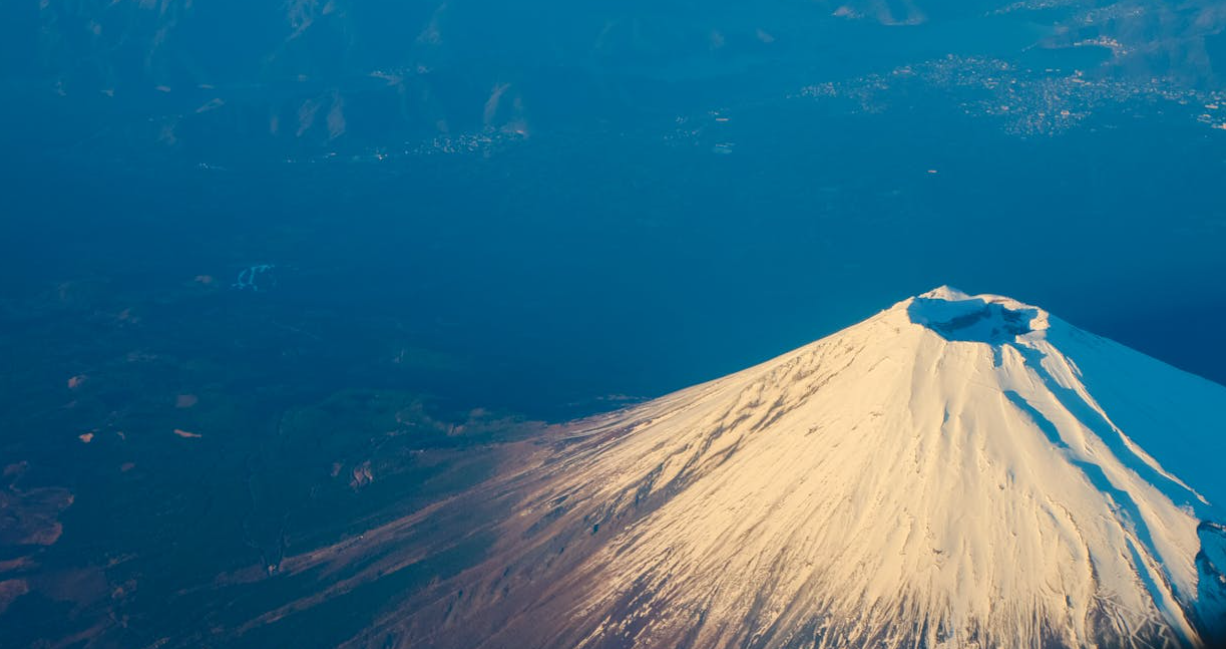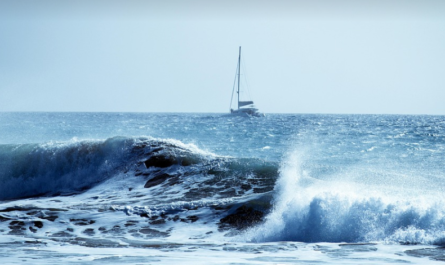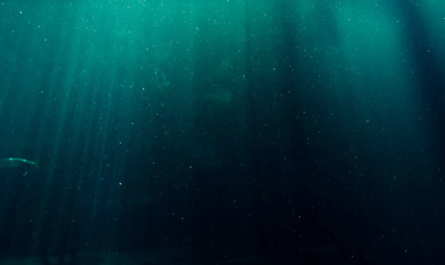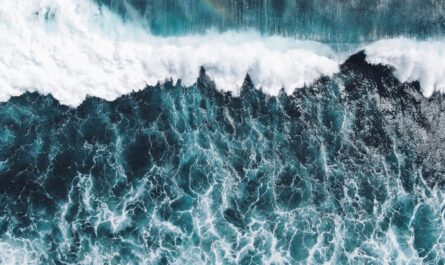Beneath the seemingly endless expanse of the Atlantic Ocean lies a dynamic world that few have ever seen—a realm of hidden mountains and active volcanoes that play a crucial role in shaping our planet. These underwater volcanoes, often forming part of vast mid-ocean ridges and seamount chains, are not only geological marvels but also key players in oceanic ecosystems, plate tectonics, and even global climate regulation. In this article, we’ll dive deep into the science behind these submarine features, explore how they are formed, examine their impact on marine life and human activity, and highlight the cutting-edge technology used to study them.
1. The Geological Marvel of the Atlantic Ocean
The Hidden Landscape Beneath the Waves
When we think of mountains, we often picture towering peaks on land. However, a significant portion of Earth’s mountainous terrain lies hidden under the sea. In the Atlantic Ocean, underwater volcanoes and ridges stretch across vast distances, forming a complex, rugged landscape. These submarine mountains, which include the famous Mid-Atlantic Ridge, are created by tectonic forces that push and pull the Earth’s crust apart, allowing molten rock to emerge and solidify on the ocean floor.
The Mid-Atlantic Ridge: A Volcanic Backbone
The Mid-Atlantic Ridge is the most iconic example of underwater volcanic activity in the Atlantic. This continuous mountain range extends from the Arctic Ocean in the north to the Southern Ocean, effectively bisecting the Atlantic. It is a divergent tectonic plate boundary where the Eurasian and North American plates, as well as the African and South American plates, are slowly moving apart. As the plates separate, magma rises from the mantle to fill the gap, creating new oceanic crust and forming volcanic structures.
The ridge is not uniform; it features rift valleys, volcanic peaks, and extensive lava flows. Some of these volcanic structures are active, emitting plumes of hydrothermal fluids and playing host to unique ecosystems that thrive on the chemical energy provided by these vents. Understanding the Mid-Atlantic Ridge is key to comprehending the broader dynamics of underwater volcanism in the region.
2. How Underwater Volcanoes Form and Evolve
The Role of Plate Tectonics
At the heart of underwater volcano formation is the theory of plate tectonics. The Earth’s lithosphere is divided into several large and small tectonic plates that float atop the semi-fluid asthenosphere. The interactions at the boundaries of these plates—whether they are moving apart, colliding, or sliding past one another—are responsible for much of the planet’s geological activity.
In the case of underwater volcanoes in the Atlantic, the process primarily occurs at divergent plate boundaries. As the tectonic plates slowly pull apart at the Mid-Atlantic Ridge, magma from the mantle rises through the gaps. When this magma reaches the surface, it cools and solidifies, creating new oceanic crust and forming volcanic features that can range from gentle ridges to towering seamounts.
Submarine Volcanism vs. Terrestrial Volcanism
While the basic processes of magma generation and eruption are similar in both submarine and terrestrial settings, there are notable differences:
- Pressure Effects: Underwater, the high pressure of the overlying water influences the eruption dynamics. This pressure can suppress the explosive behavior typical of many land volcanoes, resulting in more effusive, lava-dominated eruptions.
- Cooling Rates: The rapid cooling of magma by cold ocean water leads to the formation of unique rock textures and structures, such as pillow lavas—rounded, bulbous formations created when lava is quickly quenched.
- Ecosystem Formation: Submarine eruptions often create hydrothermal vents—fissures on the ocean floor that release mineral-rich water. These vents support unique ecosystems based on chemosynthesis, where organisms derive energy from chemical reactions rather than sunlight.
The Life Cycle of an Underwater Volcano
Underwater volcanoes go through various stages in their life cycle, much like their terrestrial counterparts:
- Initiation: Magma begins to rise as tectonic plates diverge, creating a fissure on the ocean floor.
- Eruption: The magma erupts, forming new volcanic rock. This stage may involve multiple eruptive events, building up the structure over time.
- Dormancy: After periods of active volcanism, an underwater volcano may enter a dormant phase, during which it cools and erodes gradually.
- Renewal: Dormant volcanoes can reactivate if tectonic conditions change, leading to a new cycle of eruptions.
Understanding this cycle helps scientists predict future volcanic activity and assess potential hazards.
3. Ecological and Environmental Implications
Unique Ecosystems at Hydrothermal Vents
One of the most fascinating aspects of underwater volcanoes is the ecosystems they support. Hydrothermal vents, which often form near active submarine volcanoes, release mineral-rich fluids that create oases of life in an otherwise dark and cold environment. These vents host communities of organisms—such as tube worms, clams, and unique bacteria—that rely on chemosynthesis for energy. Unlike photosynthesis, which depends on sunlight, chemosynthesis converts chemicals like hydrogen sulfide into energy, supporting entire ecosystems.
These hydrothermal vent communities are of immense scientific interest because they provide clues about the origins of life on Earth and potentially on other planets. The extreme conditions and unique biological adaptations seen here challenge our understanding of the limits of life and open up new avenues for research in biotechnology and astrobiology.
Impact on Marine Geochemistry
The activity of underwater volcanoes significantly influences the chemistry of the surrounding waters. Eruptions release various minerals and gases, such as sulfur dioxide, carbon dioxide, and iron, which can alter the pH and nutrient composition of the ocean. These changes can affect local marine life, from plankton to larger fish species, influencing the broader marine food web.
Moreover, the continuous renewal of oceanic crust through volcanic activity plays a vital role in the global carbon cycle. The sequestration of carbon in newly formed rock and its subsequent subduction into the mantle are critical processes that help regulate atmospheric carbon dioxide levels, thereby impacting global climate.
Potential Hazards and Environmental Concerns
While underwater volcanoes contribute to the dynamic nature of our planet, they also pose potential hazards:
- Tsunamis: Sudden, large-scale submarine eruptions or landslides triggered by volcanic activity can generate tsunamis, posing risks to coastal communities.
- Ocean Acidification: The release of volcanic gases, particularly carbon dioxide, can contribute to ocean acidification, affecting marine organisms that rely on calcium carbonate for their shells and skeletons.
- Geothermal Impacts: Changes in local water chemistry near hydrothermal vents may have cascading effects on marine ecosystems, particularly if eruptive events are particularly large or frequent.
4. Scientific Exploration and Technological Advances
Cutting-Edge Tools for Underwater Exploration
Advancements in technology have revolutionized the study of underwater volcanoes. Modern scientific instruments allow researchers to explore the deep ocean in ways that were once unimaginable. Some of these tools include:
- Remotely Operated Vehicles (ROVs): These unmanned submersibles can dive to great depths, capturing high-resolution images and videos of underwater volcanic activity. ROVs are equipped with scientific instruments that measure temperature, pressure, and chemical composition.
- Autonomous Underwater Vehicles (AUVs): AUVs can conduct extensive surveys of the ocean floor, mapping the topography of underwater volcanoes and collecting data on volcanic rock formations. Their ability to operate independently over long periods makes them invaluable for studying remote areas.
- Satellite Remote Sensing: Satellites monitor sea surface temperatures, water color, and even subtle changes in sea level. This data can help identify areas of active volcanic activity and track changes in the ocean’s geochemistry.
- Seismic Networks: Underwater seismographs and hydrophones detect the tremors and acoustic signals generated by volcanic activity. This information is crucial for understanding eruption patterns and assessing potential hazards.
Collaborative Global Efforts
The study of underwater volcanoes in the Atlantic is not limited to one nation or institution—it is a global effort. Researchers from various countries collaborate on multidisciplinary projects, sharing data, expertise, and technology to advance our understanding of submarine volcanism. These collaborative efforts are crucial for creating accurate models of volcanic behavior, predicting future eruptions, and developing strategies to mitigate risks associated with underwater volcanic activity.
International research initiatives also contribute to the development of new technologies and methodologies for deep-sea exploration. By pooling resources and knowledge, scientists can address some of the most challenging questions about Earth’s interior, the origins of life, and the long-term impacts of climate change.
5. The Future of Underwater Volcanism Research
Predictive Modeling and Risk Assessment
One of the primary goals of studying underwater volcanoes is to better predict their behavior and assess potential hazards. Advances in predictive modeling, powered by machine learning and artificial intelligence, are making it possible to forecast volcanic eruptions with greater accuracy. By analyzing seismic data, temperature fluctuations, and chemical signatures, scientists can identify early warning signs of volcanic activity.
These models are not only essential for safeguarding coastal communities from potential tsunamis but also for understanding the long-term impacts of volcanic activity on global climate and ocean chemistry. As technology continues to evolve, we can expect more refined models that offer deeper insights into the complex dynamics of underwater volcanism.
Environmental Conservation and Policy Implications
The research on underwater volcanoes has significant implications for environmental conservation and public policy. Understanding the natural processes that shape our ocean floors and influence global climate is critical for developing sustainable policies to protect marine ecosystems and coastal regions.
Policy-makers can use scientific data to design better coastal defense strategies, regulate offshore activities, and ensure that measures are in place to protect vulnerable communities from the impacts of rising sea levels and volcanic hazards. International cooperation in environmental research and policy-making is essential for addressing these global challenges in a coordinated manner.
The Intersection of Science and Exploration
The study of underwater volcanoes embodies the intersection of science and exploration. It is a reminder that our planet is a dynamic, ever-changing entity—one that holds mysteries waiting to be unraveled. The advancements in underwater exploration technology are not only expanding our knowledge of Earth’s geological processes but are also inspiring a new generation of scientists and explorers to venture into the depths of the ocean.
The allure of these hidden mountains beneath the ocean surface continues to captivate researchers, hobbyists, and even the general public. Documentaries, museum exhibits, and interactive media projects are helping to bring the wonders of underwater volcanism into the spotlight, raising awareness of the incredible processes that shape our world.
6. The Broader Implications: Beyond the Science
Cultural and Economic Impact
The exploration of underwater volcanoes in the Atlantic also has broader cultural and economic implications. Understanding these natural phenomena can lead to the discovery of new mineral resources, insights into sustainable energy production (such as geothermal energy), and innovative approaches to environmental conservation.
Moreover, the dramatic landscapes created by underwater volcanic activity have the potential to become tourist attractions. Eco-tourism and adventure tourism can benefit from scientific research by offering unique experiences that connect people with the hidden wonders of our planet. Responsible tourism that respects natural habitats and promotes conservation can provide economic opportunities for coastal communities and contribute to sustainable development.
Educational Outreach and Public Engagement
Communicating the importance of underwater volcanism to the public is essential for fostering a greater appreciation of our planet’s natural processes. Educational programs, public lectures, and interactive exhibits can help demystify complex geological phenomena, making them accessible and engaging for people of all ages.
By showcasing the latest discoveries and technological advances in the field, educators and scientists can inspire curiosity and encourage the next generation of researchers. This public engagement not only raises awareness of environmental issues but also fosters a culture of scientific inquiry and conservation.
7. Challenges and Future Directions
Technological Limitations and Opportunities
Despite significant progress, studying underwater volcanoes remains a challenging endeavor. The extreme conditions of the deep ocean—high pressure, low temperatures, and limited light—pose significant technical hurdles. Equipment must be robust, reliable, and capable of withstanding harsh environments.
However, these challenges also drive innovation. Researchers are continuously developing new technologies and methodologies to explore deeper and more remote parts of the ocean. The integration of robotics, artificial intelligence, and advanced materials science holds the promise of unlocking further secrets of underwater volcanism.
Collaborative Research and Funding
To overcome these challenges, sustained collaboration among governments, research institutions, and private companies is essential. Funding for oceanographic research has increased in recent years, reflecting a growing recognition of the importance of understanding our planet’s oceans. International research collaborations not only pool resources but also facilitate the exchange of ideas and expertise, accelerating progress in this field.
Environmental and Ethical Considerations
As we venture further into the depths of the ocean, ethical considerations regarding environmental impact become increasingly important. The exploration and potential exploitation of underwater resources must be balanced with a commitment to preserving marine ecosystems. Sustainable practices and strict environmental regulations are necessary to ensure that scientific exploration does not come at the cost of ecological degradation.
The challenge lies in finding a balance between advancing our understanding of the planet’s geology and safeguarding the delicate marine environments that have existed for millennia. Researchers, policy-makers, and conservationists must work together to create guidelines that promote responsible exploration and ensure that our pursuit of knowledge is both ethical and sustainable.
Conclusion: Unveiling the Hidden Wonders
Underwater volcanoes in the Atlantic are a testament to the dynamic nature of our planet. These hidden mountains, formed by the slow yet relentless forces of plate tectonics, not only reshape the ocean floor but also influence global climate, marine ecosystems, and even human activity. As we continue to explore and understand these mysterious formations, we are reminded of the interconnectedness of Earth’s systems and the importance of preserving our natural heritage.
From the scientific breakthroughs achieved through advanced exploration technologies to the broader cultural and economic impacts, the study of underwater volcanism is a field rich with potential and promise. It challenges our perceptions of the natural world and opens up new avenues for discovery, innovation, and sustainable development.
For those captivated by the wonders of the deep, the journey to understand underwater volcanoes is an invitation to explore a world where beauty, power, and mystery converge beneath the ocean surface. As research progresses and technology evolves, we can look forward to even more profound insights into the forces that shape our planet.
In the end, the hidden mountains beneath the Atlantic are not merely geological formations; they are living records of Earth’s history, dynamic forces of change, and sources of endless wonder. By embracing the challenges of studying these underwater volcanoes, we not only unlock the secrets of our planet but also lay the groundwork for a future where humanity and nature can coexist in harmony.
So, whether you are a researcher, an environmental enthusiast, or simply someone who marvels at the beauty of our planet, the study of underwater volcanoes in the Atlantic offers a glimpse into the extraordinary forces that continue to shape the world beneath the waves—a world waiting to be explored, understood, and cherished.



